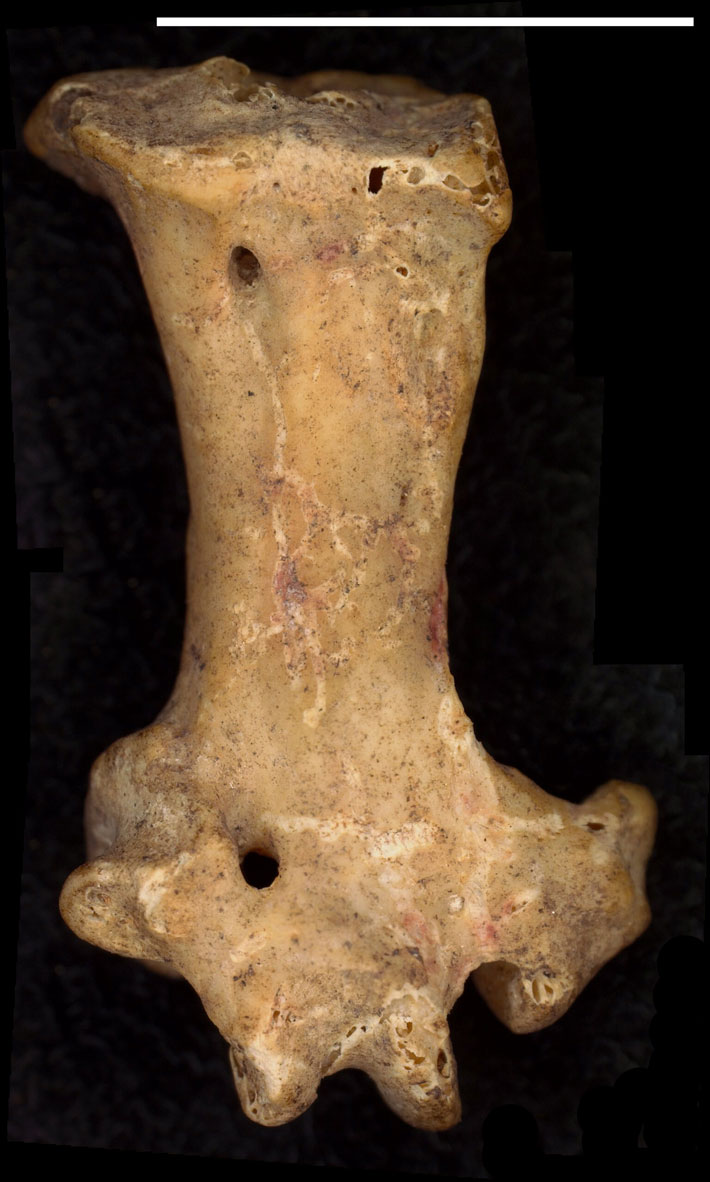 AUSTIN, TEXAS—According to a statement released by the University of Texas at Austin, some of the parrots kept by people living in the American Southwest as early as the seventh or eighth century A.D. may have been captured locally, rather than imported from Mexico. Researcher John Moretti said that he found a single anklebone from a thick-billed parrot in a collection of mostly deer and rabbit bones unearthed in New Mexico in the 1950s. Thick-billed parrots once lived in Arizona and New Mexico, where they nested in tree hollows and ate pine cones. But, due to habitat loss and hunting, the birds’ habitat is now limited to northern Mexico, Moretti explained. His review of archaeological data from Arizona and New Mexico revealed 10 sites containing thick-billed parrot remains and traces of buildings made of pine timber. A building in one of these settlements would have required an estimated 50,000 pine trees to build, he said. People may have captured the thick-billed parrots as they gathered timber, Moretti surmised. “When we deal with natural history, we can constrain ourselves by relying on the present too much,” he concluded. To read about scarlet macaws imported from Mesoamerica to New Mexico as early as A.D. 900, go to "Early Parrots in the Southwest."
AUSTIN, TEXAS—According to a statement released by the University of Texas at Austin, some of the parrots kept by people living in the American Southwest as early as the seventh or eighth century A.D. may have been captured locally, rather than imported from Mexico. Researcher John Moretti said that he found a single anklebone from a thick-billed parrot in a collection of mostly deer and rabbit bones unearthed in New Mexico in the 1950s. Thick-billed parrots once lived in Arizona and New Mexico, where they nested in tree hollows and ate pine cones. But, due to habitat loss and hunting, the birds’ habitat is now limited to northern Mexico, Moretti explained. His review of archaeological data from Arizona and New Mexico revealed 10 sites containing thick-billed parrot remains and traces of buildings made of pine timber. A building in one of these settlements would have required an estimated 50,000 pine trees to build, he said. People may have captured the thick-billed parrots as they gathered timber, Moretti surmised. “When we deal with natural history, we can constrain ourselves by relying on the present too much,” he concluded. To read about scarlet macaws imported from Mesoamerica to New Mexico as early as A.D. 900, go to "Early Parrots in the Southwest."
New Thoughts on Some Southwest Parrot Remains
